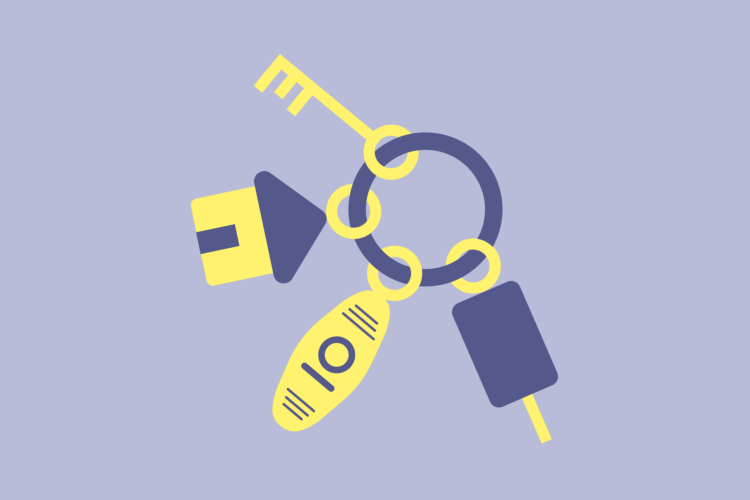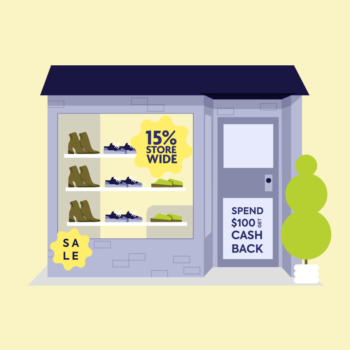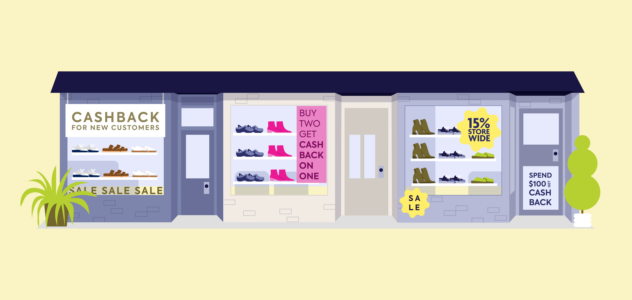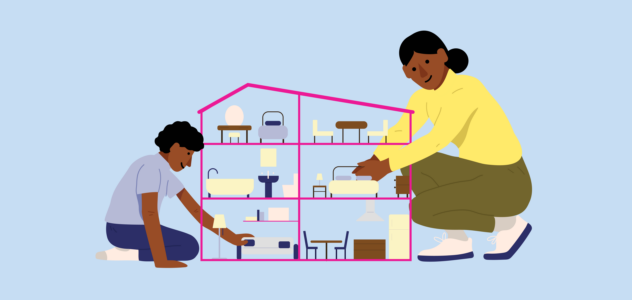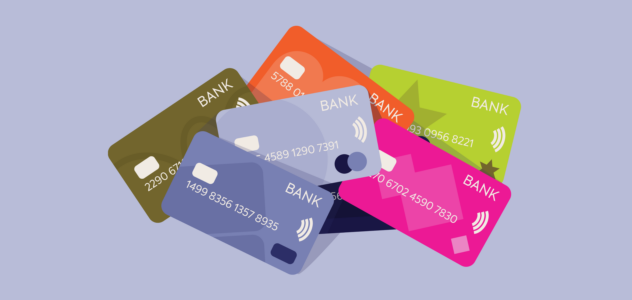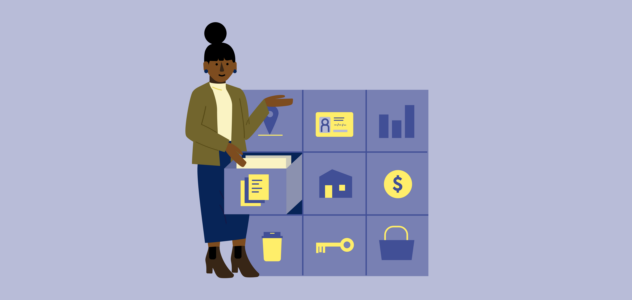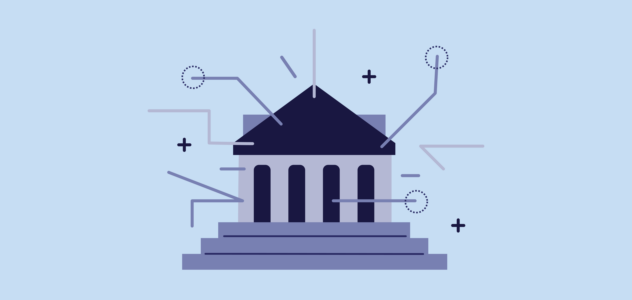Out with the old, in with the new.
Maybe you’ve had your current home loan for a few years. Or maybe you’re looking to use your property’s equity to renovate or make another purchase. Or most likely, you’re trying to find a way to reduce your repayments with a lower interest rate after all the recent rate hikes.
Refinancing is often a super savvy way to manage your home loan as it gives you the opportunity to secure a better deal (and ultimately, reach your goals).
Whatever your motivation, you may be wondering what the trade-offs are.
So, what are the costs of refinancing a mortgage? Is it worth it? Or will your best intentions all be for the sake of a few dollarydoos?
(Spoiler alert – it’s often worth it).
Let’s take a look.
What is refinancing?
In a nutshell, refinancing is replacing your current mortgage with a shiny new one.
Because home loans last a long time and often things change after you get it, refinancing is like a good ol’ check-in with your lender to say “hey, is this still working?”
Simple enough, right?
In some cases, this may look like refinancing to a new loan to get a lower interest rate, or perhaps resetting your loan term which may help you lower your repayments (sometimes both).
In other cases, you might be looking to unlock equity (AKA the difference between the value of your property and the size of the loan you have for that property) to purchase another property, pay for that dream reno or pay down another debt (the world’s your oyster, really).
If you are refinancing to get a lower rate, you will likely be looking to switch lenders because we know lenders offer the best rates to their shiny new customers rather than their existing ones.
Whatever your situation, it’s wise to always be looking out for the best deal whilst keeping a careful eye on the costs involved in making the big switch.

Costs of refinancing a mortgage
So let’s talk about the elephant in the room: fees (shudder)
This is often where homeowners put refinancing in the “too hard basket.” But with a little bit of perspective, you may see these fees as a small (and worthwhile) hurdle to saving money rather than a roadblock. Often they add up to around $1,000 for a common refinancing scenario and the potential savings can be much larger.
So, how much does it cost to refinance a home loan? Let’s look at the common fees…
Bank discharge fee
Most lenders charge a fee if you finish your loan with your lender before the end of the term. This is likely payable before you pack up your things and move on and ranges from $100 – $400 depending on lender (some don’t charge at all if you’re savvy).
This fee can have many different names but some of the common ones include settlement fee, loan discharge fee or termination fees.
Below are the settlement/discharge fees charged by the major banks (current as at 17 January 2024)
| Lender | Discharge Fee |
| ANZ | $160 |
| CBA | $350 |
| NAB | $350 |
| WBC | $350 |
Source: Lender websites
Government fees – mortgage registration and discharge
These are one-off fees charged by the respective state revenue offices to lodge and dislodge the mortgage on the title. They are collected by the lender on their behalf. The mortgage registration fee and discharge fee are typically the same amount (but it depends on the state you live in).
In the case of a refinance to a new lender, you would pay this fee twice. Once for discharging the mortgage with your current lender, and again for lodging the mortgage with your new lender.
Below are the mortgage registration fees charged by each state (current as at 1 July 2023)
| State | Registration Fee | Discharge Fee |
| ACT | $166.00 | $166.00 |
| NSW | $165.40 | $165.40 |
| NT | $165.00 | $165.00 |
| QLD | $224.32 | $224.32 |
| SA | $187.00 | $187.00 |
| TAS | $152.19 | $188.68 |
| VIC | $128.50 ($118.90 if electronic) | $128.50 ($118.90 if electronic) |
| WA | $203.00 | $203.00 |
Source: State Government websites
Fixed rate break fee (AKA Early Repayment Fee)
If you’re on a fixed rate, most lenders will charge a fee to end your fixed rate period before the end of the term if market conditions have changed since you setup your fixed rate loan.
It is way for lenders to pass on any losses they incur due to unfavourable changes in market interest rates. And no, unfortunately lenders do not pass on any gains they may make if conditions have moved in their favour since you setup your fixed rate loan.
It is not possible to give an estimate of break costs as each individual fixed rate loan is different and the cost typically factors in market interest rates at the time you setup (and end) your fixed rate. But it’s worth noting they can be large amounts and you should check with your lender (or get your broker to) before deciding to prepay or end your fixed rate term early.
Package fee
Some lenders offer products as part of a bundle or “package”. These are typically marketed as a more premium offering and include things like up-front fee waivers, more flexible home loan (with offset account), a fee-free credit card and discounts across other banking products.
The fees for these types of products are normally around $400 per annum, charged on the anniversary of your loan setup.
Having a package product can be of great benefit to you individually if the inclusions in the package are things you truly need and value. So for example, if you are paying $300 for a credit card each year, have to pay a $600 up-front fee and $10 per month for your new home loan, then the package offer might be worth considering.
As always, make sure you are factoring in the total cost when you are comparing two choices. This includes all up-front and ongoing fees and any differences in the interest rate.
Application or establishment fee
This fee is charged by some lenders on certain products to cover the admin costs of setting up your new loan. If it is payable, it is typically charged on the first day you setup your new loan as a one-off non-refundable payment. It can also be known as a settlement or documentation fee.
These fees are often up to $600 but are commonly waived by lenders when you take up their package offering.
Valuation fee
Depending on the situation, you may have to pay valuation fees. This fee covers the cost of your new lender ordering a valuation on your property so they can get comfort in its current value (and a true picture of the equity you have). The cost can vary and some lenders may include the valuation in your application fee or often, waive it as part of a package offering.
Lender’s Mortgage Insurance (LMI)
This is insurance that lenders usually take out when you’re borrowing more than 80% of a property’s value (basically, to cover them in case things go bad). These costs are then passed on to you. You should carefully consider your options if you will have to pay LMI (again) when you refinance. The cost can be quite high and it’s important to do the maths before committing.
Like fixed rate break costs, LMI can be a tricky one to estimate as it depends on a lot of factors with the most important one being your Loan to Value Ratio (LVR). The fee is often charged as a % of your loan including your loan size, LVR, location and other factors. As a rough guide, consider a potential cost of around 2% – 5% of the total loan amount. E.g. for a $500,000 loan, this could be between $10,000 and $25,000.
Your time
Ok, perhaps not a tangible fee, but it’s always a good idea to weigh up the amount of time you’ll spend refinancing (we’re here to make sure it’s a super snappy and painless process).
How much does it add up to?
We see you, wondering whether ALLLL these fees will be worth it.
Add them all up and you’re often looking at less than $1,000 in fees, depending on which state you live in. To illustrate this for you, below we have an example of a typical refinance for a customer who has decided to switch lenders from CommBank to NAB. They currently have a variable rate loan secured by a single property, located in NSW.
Upfront / one-off costs
- CommBank Settlement (Discharge) fee: $350
- NSW discharge of mortgage fee: $154.20
- NSW lodgement of mortgage fee: $154.20
TOTAL COSTS = $658.40 (one-off)
Ongoing costs
- CommBank annual Wealth Package fee: $395.00 (current annual fee, no longer paid)
- NAB monthly service fee: $8 p.m. (new monthly fee, to be paid)
TOTAL SAVINGS = $299.00 (per annum)
So as you can see, the up-front costs for a pretty common scenario are quite small and there are even savings to be made in the ongoing fees which you pay if you shop around.
On top of all of this, you could land a lower interest rate and potentially receive a cashback bonus for switching. Cha-ching!
If you’re wondering how much you could potentially save (after costs) the Finspo Rate My Rate tool is a great place to start. It’s our home loan comparison tool that’ll calculate the fees for your particular scenario, as well as your potential savings and cashback offers.
Plus, it only takes 30 seconds to complete. How easy is that?
When is it a good time to refinance?
So now you know what the costs look like, you’re probably wondering when to make the move? If you’re scratching your head over whether now’s a good time, here are the most common reasons why people refinance which may apply to you…
When lower interest rates are available
“I don’t want to save money” said no homeowner, ever. So if there’s a lower interest rate available — even a fraction of a percentage of what you’re currently on — it could save you thousands over the life of your loan. Plus, it’s not just changing interest rates that can help you save. With so many reputable lenders out there today, you may be able to find an option with less (or no) fees.
Are you watching the money leave your account with no idea what your current interest rate is? Let alone if you can get a better one? Zero judgement here, but we do encourage you to let us help you check it out.
When your property has increased in value
These days, you can barely hold a social conversation without broaching the topic of house prices. And if you’re a current homeowner, your property may have increased in value over recent years, allowing you to refinance to a lower rate and potentially access some of that sweet, sweet equity.
When you’d like to access equity to buy, renovate or live your best life
In some cases, homeowners want to refinance to access equity for a specific reason. This could be to buy another property, renovate your existing property, pay down other debts or buy another asset like a car.
When your fixed rate is due to expire
A fixed rate home loan is when your interest rate and repayments stay the same for a set period. When this period runs out, you can get caught out paying a much higher rate (sometimes higher than the bank’s new clients — AKA mortgage loyalty tax). When your fixed rate home loan is about to expire, it’s a good reminder to reassess your situation and avoid a potential increase in your interest rate.
To take advantage of a cashback offer
Did you know that a lot of lenders will throw up to $3,000^ at you just for switching your home loan to them? Booyah! And if you’re really savvy, you can also pick up a better interest rate while you’re at it. Stopping all stations to savings-ville. But remember, there are also some costs associated with refinancing (these are often outweighed by the potential savings… more on that in a minute).
Your circumstances have changed
Got a promotion? Landed that dream job with a juicy paycheck? Experienced a significant life event where you need access to money? Whatever it may be, if you find your personal circumstances have changed, it’s a good idea to check in with your broker to discover your options.
Finally, if you’re still scratching your head over whether it’s a good time to refinance, we recommend checking in with your home loan every few years. This will ensure you’re not getting caught out with a poor rate or paying too much.
We see you, wondering whether ALLLL these fees will be worth it.
Add them all up and you’re often looking at less than $1,000 in fees. And in most cases we’ve experienced, your potential savings will far exceed this amount (yep, you read that right).
If you’re wondering how much you could potentially save (after costs) the Finspo Rate my rate tool is a great place to start. It’s our home loan comparison tool that’ll calculate the fees for your particular scenario, as well as your potential savings.
Plus, it only takes 30 seconds to complete. How easy is that?

So, is it worth refinancing a home loan?
We know you’re looking for a straightforward answer.
But the truth is, asking whether refinancing a mortgage is worth it is a personal question with a personal answer.
But in many cases? It’s worth it.
The first step to weighing up your situation is to speak to a broker (oh hey) who’ll run through the numbers and forecast what your payoff will look like. We’ll even speak with the lenders on your behalf so you don’t have to!
You’ll be shocked at how easy the process is…
- Book an appointment with a Finspo expert (online, phew!)
- Tell us about yourself and provide any additional information
- We’ll do the heavy lifting and present your options, so you can choose your approach
Simple!
If you’re not ready to speak to a real human, you can start with Rate my rate, which will calculate your potential savings (including any switching costs) for your scenario.
So what are you waiting for?
Get started with Finspo today.
^Cashback offers from select lenders subject to eligibility criteria, terms and conditions.
Figures were current as at 17 January 2024.
Finspo ABN 34 637 821 928 Australian Credit Licence 521120.
Things you need to know: This information is general only and is not intended to include any recommendation or suggestion about any particular credit product. It does not take into account your financial situation, requirements, and objectives. Please consider whether this information is right for you before making any decisions and seek professional tax or financial advice.
